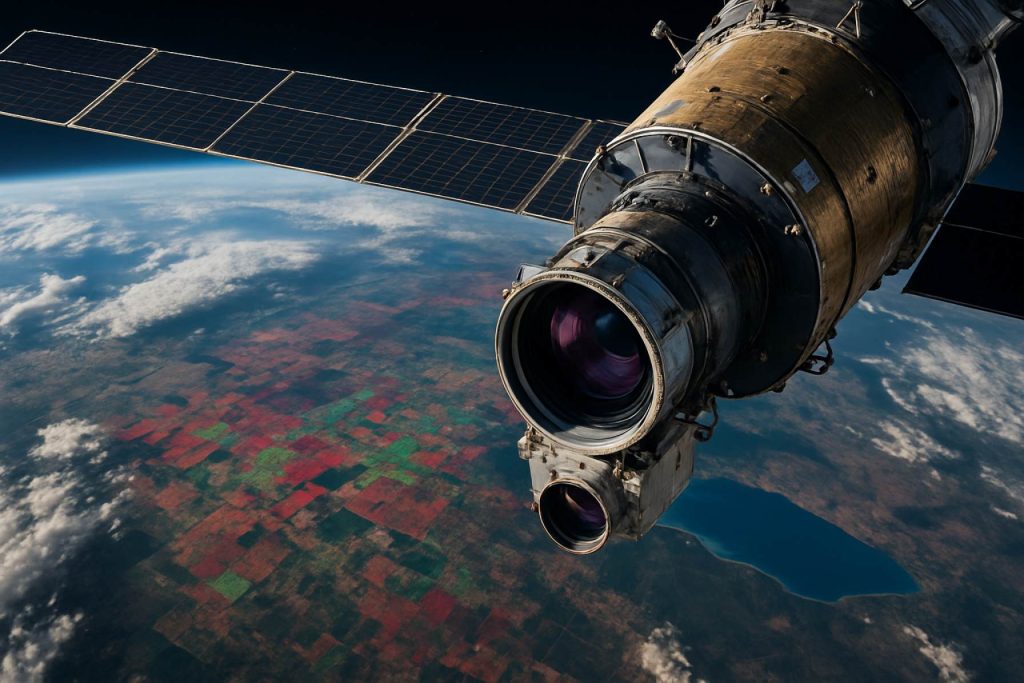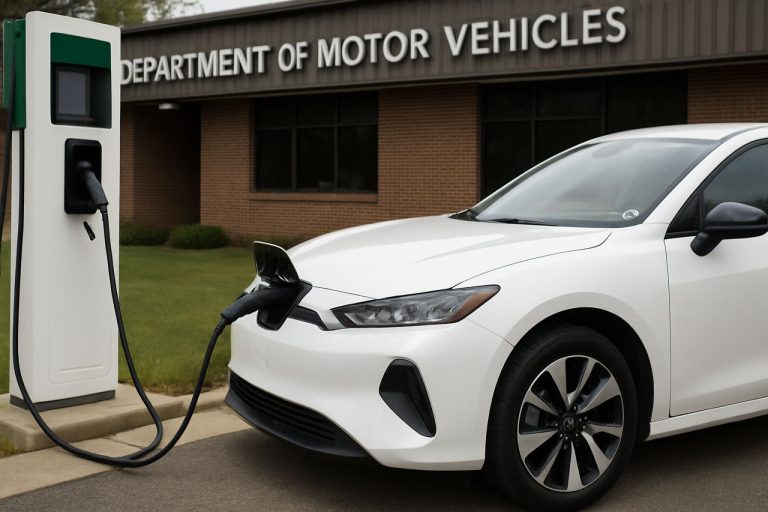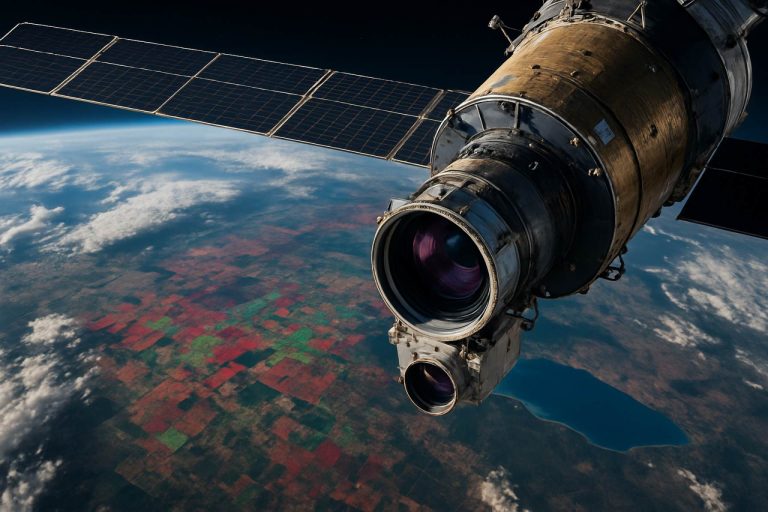
Remote Sensing Satellites & Multi-Spectral Imaging in 2025: How Advanced Orbits and Spectral Technologies Are Transforming Earth Observation and Driving 15% Annual Market Growth Through 2030
- Executive Summary: 2025 Market Landscape & Key Drivers
- Technology Overview: Remote Sensing Satellites and Multi-Spectral Imaging Explained
- Major Industry Players and Recent Launches (e.g., airbus.com, maxar.com, esa.int, nasa.gov)
- Market Size, Segmentation, and 2025–2030 Growth Forecasts
- Emerging Applications: Agriculture, Climate Monitoring, Urban Planning, and Defense
- Innovation Spotlight: Next-Generation Sensors, AI Integration, and Data Analytics
- Regulatory Environment and International Collaboration (e.g., copernicus.eu, usgs.gov)
- Investment Trends, Funding, and M&A Activity
- Challenges: Data Security, Spectrum Management, and Satellite Lifespan
- Future Outlook: Disruptive Technologies and Strategic Opportunities to 2030
- Sources & References
Executive Summary: 2025 Market Landscape & Key Drivers
The remote sensing satellite and multi-spectral imaging sector is poised for robust growth in 2025, driven by technological advancements, expanding commercial applications, and increased government investments. The proliferation of small satellite constellations, improvements in sensor resolution, and the integration of artificial intelligence (AI) for data analysis are reshaping the market landscape. Key players are leveraging these innovations to deliver higher-frequency, higher-resolution, and more cost-effective Earth observation data to a broadening customer base.
In 2025, the deployment of new satellite constellations is accelerating. Companies such as Maxar Technologies and Planet Labs PBC are expanding their fleets, with Maxar focusing on high-resolution optical and multi-spectral imaging, and Planet Labs operating one of the world’s largest constellations of Earth observation satellites, providing daily global coverage. Meanwhile, Airbus Defence and Space continues to enhance its Pléiades Neo constellation, offering 30 cm resolution and advanced multi-spectral capabilities. These developments are enabling more frequent and detailed monitoring of environmental changes, urban development, and agricultural productivity.
Government agencies remain significant market drivers. The European Space Agency’s Copernicus program, with its Sentinel satellites, and the United States Geological Survey’s Landsat program, are both expanding their multi-spectral imaging capabilities and open data policies, fostering innovation and downstream commercial applications. In Asia, Indian Space Research Organisation (ISRO) and the China National Space Administration are also increasing their investments in remote sensing infrastructure, further diversifying the global supply of satellite imagery.
Multi-spectral imaging is increasingly critical for applications such as precision agriculture, disaster response, climate monitoring, and infrastructure management. The integration of AI and machine learning is enhancing the value of satellite data, enabling faster and more accurate insights. Companies like Satellogic are leveraging AI-driven analytics to deliver actionable intelligence from high-frequency, multi-spectral imagery.
Looking ahead, the market is expected to see continued growth through 2025 and beyond, with trends pointing toward greater data accessibility, higher revisit rates, and the emergence of new commercial and governmental use cases. The convergence of advanced sensor technology, cloud-based data platforms, and AI-powered analytics is set to further democratize access to high-quality remote sensing data, positioning the sector for sustained expansion and innovation.
Technology Overview: Remote Sensing Satellites and Multi-Spectral Imaging Explained
Remote sensing satellites equipped with multi-spectral imaging systems are at the forefront of Earth observation technology in 2025, enabling detailed monitoring of terrestrial, atmospheric, and oceanic phenomena. These satellites capture data across multiple spectral bands—ranging from visible to infrared and beyond—allowing for the extraction of information not discernible to the human eye. The technology underpins applications in agriculture, forestry, urban planning, disaster response, and climate science.
The current generation of remote sensing satellites is characterized by increased spatial, spectral, and temporal resolution. Leading manufacturers and operators such as Airbus, Maxar Technologies, and Planet Labs PBC have deployed constellations capable of capturing imagery at resolutions down to 30 centimeters, with revisit times measured in hours. For example, Maxar Technologies operates the WorldView and GeoEye series, which provide high-resolution multi-spectral and panchromatic imagery for both commercial and governmental clients.
Multi-spectral imaging systems typically divide the electromagnetic spectrum into discrete bands—commonly including blue, green, red, near-infrared (NIR), and shortwave infrared (SWIR). This enables the detection of subtle differences in vegetation health, soil moisture, water quality, and urban materials. Planet Labs PBC’s Dove and SuperDove satellites, for instance, offer daily global coverage with up to eight spectral bands, supporting precision agriculture and environmental monitoring.
In 2025, the trend is toward even greater spectral diversity and higher data throughput. Airbus’s Pléiades Neo constellation, launched between 2021 and 2024, delivers 30 cm resolution and includes advanced multi-spectral capabilities, while the upcoming EnMAP mission from German Aerospace Center (DLR) is set to provide hyperspectral data with hundreds of contiguous bands, further expanding analytical possibilities.
The integration of artificial intelligence and cloud-based processing is accelerating the extraction of actionable insights from multi-spectral data. Companies such as Planet Labs PBC and Maxar Technologies are investing in automated analytics platforms, enabling near-real-time change detection and thematic mapping at scale.
Looking ahead, the proliferation of small satellite constellations and the miniaturization of multi-spectral sensors are expected to drive down costs and increase accessibility. This democratization of Earth observation data is anticipated to fuel innovation across sectors, from precision farming to urban resilience, as the capabilities of remote sensing satellites and multi-spectral imaging continue to expand through 2025 and beyond.
Major Industry Players and Recent Launches (e.g., airbus.com, maxar.com, esa.int, nasa.gov)
The remote sensing satellite sector is experiencing rapid growth and technological advancement, with major industry players driving innovation in multi-spectral imaging capabilities. As of 2025, several key organizations are shaping the landscape through new satellite launches, expanded imaging constellations, and enhanced data services.
Airbus remains a leader in Earth observation, operating the Pléiades Neo constellation, which delivers high-resolution, multi-spectral imagery with a revisit time of several times per day. The Pléiades Neo satellites, launched between 2021 and 2024, offer 30 cm native resolution and 6 spectral bands, supporting applications from urban planning to agriculture. Airbus continues to invest in expanding its satellite fleet and data analytics platforms, aiming to provide near-real-time insights for commercial and governmental users.
Maxar Technologies is another dominant force, with its WorldView and GeoEye satellites providing some of the highest-resolution commercial imagery available. In 2023, Maxar launched WorldView Legion, a new generation of satellites designed to increase revisit rates and deliver advanced multi-spectral data. The Legion constellation is expected to be fully operational by 2025, significantly enhancing Maxar’s capacity for rapid, high-frequency imaging across the globe.
On the public sector front, the European Space Agency (ESA) continues to expand the Copernicus program, with Sentinel-2A and Sentinel-2B satellites providing free, open-access multi-spectral data in 13 bands. The upcoming Sentinel-2 Next Generation, planned for launch in the next few years, will further improve spatial and spectral resolution, supporting climate monitoring, land use analysis, and disaster response.
In the United States, NASA is advancing multi-spectral imaging through the Landsat program. Landsat 9, launched in 2021, continues to deliver critical data for environmental monitoring, while planning is underway for Landsat Next, which will feature more spectral bands and higher temporal resolution, with a target launch in the late 2020s.
Other notable players include Planet Labs PBC, which operates the largest fleet of Earth observation satellites, providing daily, medium-resolution multi-spectral imagery, and Sat Imaging Corporation, which supplies data from a variety of international satellite operators.
Looking ahead, the industry is expected to see further miniaturization of satellites, increased use of artificial intelligence for image analysis, and greater integration of multi-spectral data into commercial and governmental decision-making processes. The competitive landscape will likely intensify as new entrants deploy advanced constellations and established players enhance their offerings, driving innovation and expanding the applications of remote sensing and multi-spectral imaging worldwide.
Market Size, Segmentation, and 2025–2030 Growth Forecasts
The global market for remote sensing satellites and multi-spectral imaging is poised for robust growth between 2025 and 2030, driven by expanding applications in environmental monitoring, agriculture, defense, urban planning, and disaster management. As of 2025, the sector is characterized by a diverse ecosystem of satellite operators, payload manufacturers, and data analytics providers, with increasing participation from both established aerospace giants and innovative new entrants.
Market segmentation is typically based on satellite type (e.g., small, medium, large), imaging technology (multi-spectral, hyperspectral, panchromatic), end-user industry (government, agriculture, energy, defense, commercial), and geographic region. Multi-spectral imaging, which captures data across several discrete spectral bands, remains a core capability for most Earth observation missions, enabling detailed analysis of land cover, vegetation health, water quality, and mineral composition.
Key industry players include Airbus, which operates the Pléiades Neo and SPOT satellite constellations, offering high-resolution multi-spectral imagery for commercial and governmental clients. Maxar Technologies is another major force, with its WorldView and GeoEye satellites providing advanced multi-spectral and panchromatic imaging. Planet Labs PBC has rapidly expanded its fleet of small satellites (Dove, SkySat), delivering daily, high-frequency multi-spectral data to a broad range of industries. In Asia, Indian Space Research Organisation (ISRO) and China Geological Survey (operating the Gaofen series) are significant contributors to the global supply of multi-spectral satellite data.
The market outlook for 2025–2030 is shaped by several trends. First, the proliferation of small satellites and constellations is expected to drive down the cost per image and increase revisit rates, making near-real-time monitoring feasible for more users. Second, advances in sensor technology are enabling higher spatial, spectral, and temporal resolution, expanding the utility of multi-spectral data for precision agriculture, climate science, and infrastructure monitoring. Third, the integration of artificial intelligence and cloud-based analytics is making it easier for non-expert users to extract actionable insights from complex multi-spectral datasets.
Regionally, North America and Europe are anticipated to maintain leadership in both satellite manufacturing and downstream analytics, while Asia-Pacific is projected to see the fastest growth in satellite launches and data consumption, fueled by government investments and commercial demand. The entry of new private operators and the increasing availability of open-access data from public missions (such as Copernicus Sentinel and Landsat) are expected to further democratize access and stimulate innovation.
Overall, the remote sensing satellites and multi-spectral imaging market is forecast to experience sustained double-digit annual growth through 2030, with total market value potentially exceeding tens of billions of dollars by the end of the decade, as satellite data becomes an indispensable resource for digital transformation across multiple sectors.
Emerging Applications: Agriculture, Climate Monitoring, Urban Planning, and Defense
Remote sensing satellites equipped with multi-spectral imaging capabilities are playing an increasingly pivotal role in diverse sectors such as agriculture, climate monitoring, urban planning, and defense. As of 2025, the deployment of advanced satellite constellations and the integration of artificial intelligence (AI) for data analysis are accelerating the adoption and impact of these technologies.
In agriculture, multi-spectral imaging enables precise monitoring of crop health, soil moisture, and pest infestations. Leading satellite operators such as Planet Labs PBC and Maxar Technologies provide high-frequency, high-resolution imagery that supports precision farming and yield optimization. Their satellites capture data across visible and near-infrared bands, allowing for the calculation of vegetation indices like NDVI (Normalized Difference Vegetation Index), which are critical for assessing plant vitality and stress. In 2025, the trend is toward even higher revisit rates and finer spatial resolution, with new launches planned to expand coverage and data granularity.
Climate monitoring is another area where multi-spectral remote sensing is indispensable. Satellites from organizations such as the European Space Agency (ESA) and NASA are equipped with sensors that track atmospheric gases, land surface temperatures, and ocean color. The Copernicus Sentinel series, operated by ESA, continues to deliver critical data for tracking greenhouse gas emissions, deforestation, and ice sheet dynamics. In the coming years, new missions like Sentinel-4 and Sentinel-5 are expected to enhance atmospheric composition monitoring, supporting global climate agreements and policy decisions.
Urban planning is benefiting from the integration of multi-spectral satellite data with geographic information systems (GIS). Companies such as Airbus Defence and Space are providing urban planners with detailed land use and land cover maps, enabling better management of urban sprawl, infrastructure development, and disaster response. The use of multi-spectral data allows for the identification of impervious surfaces, vegetation cover, and water bodies, which are essential for sustainable city planning.
In defense and security, multi-spectral imaging satellites are crucial for reconnaissance, surveillance, and intelligence gathering. Governments and defense agencies increasingly rely on commercial providers like Maxar Technologies and Airbus Defence and Space for timely, high-resolution imagery. The trend toward smaller, more agile satellites and the use of AI-driven analytics is expected to further enhance situational awareness and decision-making capabilities in the near future.
Looking ahead, the convergence of multi-spectral imaging, AI, and cloud-based data platforms is set to unlock new applications and efficiencies across these sectors. The ongoing miniaturization of sensors and the proliferation of satellite constellations will continue to drive down costs and increase accessibility, making remote sensing an even more integral tool for addressing global challenges in agriculture, climate, urbanization, and security.
Innovation Spotlight: Next-Generation Sensors, AI Integration, and Data Analytics
The remote sensing satellite sector is undergoing rapid transformation in 2025, driven by advances in next-generation sensors, artificial intelligence (AI) integration, and sophisticated data analytics. Multi-spectral imaging, which captures data across multiple wavelengths, remains at the core of these innovations, enabling unprecedented insights for applications ranging from agriculture and forestry to urban planning and climate monitoring.
A key trend is the deployment of satellites equipped with advanced multi- and hyperspectral sensors. These sensors can distinguish subtle differences in surface materials, vegetation health, and water quality. Maxar Technologies, a leading provider of Earth intelligence, continues to expand its WorldView and Legion satellite constellations, offering high-resolution multi-spectral imagery with revisit times measured in hours. Similarly, Planet Labs PBC operates one of the world’s largest fleets of Earth observation satellites, including the SuperDove series, which delivers daily, multi-spectral data at 3–5 meter resolution.
AI and machine learning are increasingly embedded in both onboard satellite systems and ground-based data processing pipelines. These technologies automate the detection of features such as crop stress, deforestation, and urban expansion, dramatically reducing the time from data acquisition to actionable insights. Airbus Defence and Space is integrating AI-driven analytics into its Pléiades Neo constellation, enabling near-real-time change detection and object recognition. Meanwhile, Sat Imaging Corporation and other analytics providers are leveraging cloud-based platforms to deliver tailored, on-demand analysis to end users.
The next few years will see further miniaturization and cost reduction in sensor technology, making high-quality multi-spectral imaging accessible to a broader range of users. Startups and established players alike are investing in small satellite (smallsat) and CubeSat platforms, which can be rapidly deployed and updated with the latest sensor payloads. ICEYE, for example, is pioneering synthetic aperture radar (SAR) satellites with multi-spectral capabilities, expanding the range of observable phenomena under all weather conditions.
Looking ahead, the convergence of next-generation sensors, AI, and advanced analytics is expected to unlock new applications and business models. Real-time environmental monitoring, precision agriculture, and disaster response will benefit from faster, more granular, and more reliable data streams. As the sector continues to innovate, collaboration between satellite operators, analytics firms, and end users will be crucial to fully realize the potential of remote sensing and multi-spectral imaging technologies.
Regulatory Environment and International Collaboration (e.g., copernicus.eu, usgs.gov)
The regulatory environment for remote sensing satellites and multi-spectral imaging is evolving rapidly in 2025, shaped by both national frameworks and international collaboration. As the number of satellites in orbit increases and data demand grows, governments and intergovernmental organizations are refining policies to ensure responsible data use, security, and equitable access.
In the United States, the U.S. Geological Survey (USGS) continues to play a pivotal role in managing and distributing remote sensing data, particularly from the Landsat program. The Landsat 9 satellite, launched in 2021, remains a cornerstone for multi-spectral Earth observation, and preparations for Landsat Next, expected to launch in the late 2020s, are underway. The USGS, in partnership with NASA, is also updating licensing and data-sharing policies to accommodate the growing influx of commercial and international data sources.
In Europe, the Copernicus Programme—coordinated by the European Commission and implemented in partnership with the European Space Agency (ESA)—remains a global leader in open-access satellite data. The Sentinel series, particularly Sentinel-2 with its high-resolution multi-spectral imaging capabilities, continues to expand. In 2025, Copernicus is advancing its next-generation satellites, including Sentinel Expansion missions, to address emerging needs such as climate monitoring and land use change. The program’s open data policy is a model for international collaboration, enabling researchers and governments worldwide to access and utilize high-quality Earth observation data.
Internationally, collaboration is intensifying through frameworks such as the Committee on Earth Observation Satellites (CEOS), which coordinates civil space-borne observations of the Earth. CEOS members, including USGS, ESA, and agencies from Asia and South America, are working to harmonize data standards and facilitate interoperability among diverse satellite systems. This is crucial as new entrants, such as India’s Indian Space Research Organisation (ISRO) and China’s China National Space Administration (CNSA), expand their multi-spectral imaging capabilities and data-sharing initiatives.
Looking ahead, regulatory focus is expected to intensify on issues such as data privacy, dual-use technology controls, and orbital debris mitigation. The proliferation of commercial satellite operators is prompting updates to licensing regimes and export controls, particularly in the U.S. and Europe. Meanwhile, international collaboration is likely to deepen, with joint missions and shared data platforms supporting global challenges like climate change, disaster response, and sustainable development.
Investment Trends, Funding, and M&A Activity
The remote sensing satellite and multi-spectral imaging sector is experiencing robust investment momentum in 2025, driven by surging demand for high-resolution Earth observation data across industries such as agriculture, climate monitoring, defense, and urban planning. Venture capital, private equity, and strategic corporate investments are fueling both established players and a new generation of startups, while mergers and acquisitions (M&A) are reshaping the competitive landscape.
Major satellite operators and manufacturers are at the forefront of this trend. Maxar Technologies, a global leader in Earth intelligence and space infrastructure, continues to attract significant capital for expanding its WorldView and Legion satellite constellations, which deliver advanced multi-spectral and hyperspectral imaging. Similarly, Planet Labs PBC—renowned for its daily global imaging via a fleet of Dove and SuperDove satellites—has secured new funding rounds to enhance its data analytics and expand its high-frequency, multi-band imaging capabilities.
In Europe, Airbus Defence and Space is investing in next-generation optical and radar satellites, leveraging its Pléiades Neo constellation for commercial and governmental clients. Meanwhile, Satellogic, an emerging player with a vertically integrated approach, has raised capital to scale its constellation and offer affordable, high-resolution multi-spectral imagery.
M&A activity is intensifying as larger incumbents seek to acquire innovative technologies and expand their service portfolios. Notably, Maxar Technologies completed its acquisition by private equity firm Advent International in late 2023, providing fresh capital for expansion and R&D. Strategic partnerships and acquisitions are also evident among analytics and downstream service providers, as companies seek to integrate AI-driven image analysis and cloud-based delivery platforms.
Governmental and institutional funding remains a key driver, with agencies such as the European Space Agency (ESA) and NASA supporting commercial partnerships and co-funding missions that advance multi-spectral imaging capabilities. The European Union’s Copernicus program, operated by ESA, continues to invest in Sentinel satellites, ensuring a steady pipeline of open-access multi-spectral data.
Looking ahead, the sector is expected to see continued inflows of capital, with a focus on miniaturized satellites, real-time data delivery, and advanced analytics. The convergence of private investment, public funding, and M&A is accelerating innovation, lowering costs, and broadening access to high-quality remote sensing data worldwide.
Challenges: Data Security, Spectrum Management, and Satellite Lifespan
Remote sensing satellites equipped with multi-spectral imaging capabilities are central to Earth observation, environmental monitoring, and resource management. However, as the sector expands rapidly in 2025 and beyond, several critical challenges are emerging—particularly in data security, spectrum management, and satellite lifespan.
Data Security: The proliferation of high-resolution, multi-spectral data from satellites raises significant concerns about data integrity, privacy, and protection against cyber threats. As satellite constellations grow, the volume and sensitivity of transmitted data increase, making them attractive targets for cyberattacks. Leading operators such as Maxar Technologies and Planet Labs PBC are investing in advanced encryption and secure ground station protocols to mitigate risks. The European Space Agency (ESA) is also prioritizing cybersecurity in its Copernicus program, implementing end-to-end encryption and authentication measures for data downlinks. Despite these efforts, the sector faces ongoing challenges in standardizing security frameworks across international operators and ensuring resilience against increasingly sophisticated threats.
Spectrum Management: The surge in satellite launches—driven by both commercial and governmental actors—has intensified competition for limited radio frequency spectrum. Multi-spectral imaging satellites require reliable, interference-free communication channels for data transmission. The International Telecommunication Union (ITU) plays a central role in coordinating spectrum allocation, but the rapid deployment of large constellations by companies like Satellogic and Airbus Defence and Space is straining existing frameworks. Spectrum congestion can lead to data loss, reduced image quality, and operational delays. In response, industry stakeholders are advocating for more dynamic spectrum sharing and advanced interference mitigation technologies, but regulatory harmonization remains a work in progress.
Satellite Lifespan: The operational lifespan of remote sensing satellites is typically limited by factors such as onboard fuel, component degradation, and exposure to space weather. Most commercial multi-spectral imaging satellites are designed for 5–10 years of service, after which performance may decline or the satellite becomes space debris. Companies like OHB SE and Northrop Grumman are exploring modular designs and on-orbit servicing to extend satellite lifespans. However, the cost and technical complexity of such solutions remain significant barriers. The growing number of decommissioned satellites also raises concerns about orbital debris, prompting calls for stricter end-of-life disposal protocols and active debris removal initiatives.
Looking ahead, addressing these challenges will require coordinated action among satellite manufacturers, operators, regulators, and international bodies. Advances in cybersecurity, spectrum management, and satellite servicing technologies are expected, but the pace of innovation must keep up with the accelerating deployment of remote sensing assets worldwide.
Future Outlook: Disruptive Technologies and Strategic Opportunities to 2030
Remote sensing satellites and multi-spectral imaging are poised for significant transformation through 2025 and into the latter half of the decade, driven by rapid advances in sensor technology, satellite miniaturization, and data analytics. The proliferation of small satellites (smallsats) and constellations is democratizing access to high-resolution, multi-spectral data, enabling new commercial and governmental applications across agriculture, climate monitoring, urban planning, and defense.
Key industry players are accelerating deployment of next-generation satellites with enhanced imaging capabilities. Maxar Technologies continues to expand its WorldView and Legion satellite constellations, offering sub-meter resolution and advanced multi-spectral bands for detailed earth observation. Planet Labs PBC operates one of the world’s largest fleets of earth imaging satellites, with its SuperDove and upcoming Pelican constellations delivering daily, high-frequency multi-spectral imagery at 3-5 meter resolution. These constellations are expected to further increase revisit rates and spectral diversity by 2025, supporting near-real-time monitoring of environmental and human activity.
Meanwhile, Airbus Defence and Space is advancing its Pléiades Neo constellation, which provides 30 cm native resolution and up to six spectral bands, targeting precision agriculture, disaster response, and infrastructure monitoring. Satellogic is scaling up its constellation to deliver high-frequency, high-resolution multi-spectral data, aiming for weekly global remapping by mid-decade. These developments are complemented by the European Space Agency’s Copernicus program, which continues to expand its Sentinel satellite family, providing free and open access to multi-spectral data for scientific and commercial use.
Disruptive technologies on the horizon include hyperspectral imaging, which captures hundreds of narrow spectral bands, enabling detection of subtle material differences and chemical compositions. Companies such as HyperScout and ICEYE are integrating hyperspectral and synthetic aperture radar (SAR) sensors into smallsat platforms, broadening the scope of remote sensing applications. Artificial intelligence and edge computing are also being embedded onboard satellites, allowing for real-time data processing and rapid delivery of actionable insights.
Looking ahead to 2030, the convergence of multi-spectral, hyperspectral, and SAR imaging, combined with AI-driven analytics, is expected to unlock new strategic opportunities. These include precision resource management, climate resilience planning, and enhanced situational awareness for security and disaster response. As launch costs continue to fall and satellite lifecycles shorten, the sector is likely to see increased competition, innovation, and accessibility, fundamentally reshaping the global remote sensing landscape.
Sources & References
- Maxar Technologies
- Planet Labs PBC
- Airbus Defence and Space
- Indian Space Research Organisation (ISRO)
- Satellogic
- German Aerospace Center (DLR)
- European Space Agency (ESA)
- NASA
- China Geological Survey
- ICEYE
- NASA
- Copernicus Programme
- European Space Agency
- ITU
- OHB SE
- Northrop Grumman
- HyperScout



